2017
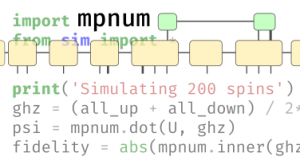
mpnum: A matrix product representation library for Python – D. Suess and M. Holzäpfel, Journal of Open Source Software, 2(20), 465 (2017)
Simulating the behaviour of a quantum many-body system on a (classical) computer is challenging because the Hilbert space dimension grows exponentially with the number of distinguishable particles. However, many physically relevant phenomena use only a "small corner" of the full Hilbert space. Numerical methods based on so-called "matrix products states" (MPS) or "tensor trains" (TT) exploit this fact. With their history dating back to 1992, these algorithms currently receive a lot of attention both in the computational physics community and, since about 2010, the numerical mathematics community. The paper presents our software package "mpnum" which makes it easy to implement MPS/TT-based algorithms in Python. Such algorithms include e.g. simulations of various quantum systems or more general data processing algorithms. Our code was developed together with the University of Cologne and it is available as open source from
github.com/dseuss/mpnum. Contributions in many areas are welcome, e.g. physics simulations based on mpnum or algorithmic improvements for the software package itself.
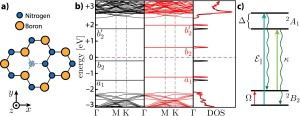
Spin-Mechanical Scheme with Color Centers in Hexagonal Boron Nitride Membranes – M. Abdi, M.-J. Hwang, M. Aghtar, and M. B. Plenio, Physical Review Letters, 119, 233602 (2017) | ArXiv
We have many mechanical resonators in our everyday life. They have been a part of technology from a very long time ago. And nowadays that the quantum technology––employing the quantum physics in our daily life––is the cutting edge science working with mechanical resonators remains as an option that has many advantages. To harness them, however, one requires an auxiliary system as they are not easily accessible. A strong enough interaction between the auxiliary system and the mechanical resonator shall provide a sustainable control over the latter.
In this work, we have proposed a scheme based on very recent experimental observations in two-dimensional materials, the single-photon emitters in layered hexagonal boron nitride (hBN). The proposed setup is composed of a free-standing hexagonal boron nitride (hBN) membrane with an embedded quantum emitter. In our study we reveal that ground state spin of the emitter can be fully manipulated by electromagnetic waves. Yet it can get into a strong coupling with the vibrational modes of the hBN membrane. We provide a few protocols that shows versatility and strength of such a system in quantum control of the mechanical vibrations.
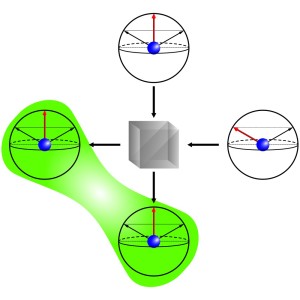
Resource Theory of Superposition – T. Theurer, N. Killoran, D. Egloff, and M. B. Plenio, Physical Review Letters, 119, 230401 (2017) | ArXiv,
DOI:https://doi.org/10.1103/PhysRevLett.119.230401
Quantum devices can outperform their classical counterparts in certain tasks – but which fundamental properties of nature are the ‘fuel source’ for this enhanced performance? In principle, all types of non-classicality such as entanglement or coherence could contribute. Recently, there is a growing realization that these properties might be different manifestations of the same feature, namely superposition, which is one of the most fundamental characteristics of quantum mechanics. Motivated by this, we present superposition as a resource and analyse it in the mathematical framework of resource theories. The result is a generalization of resource theories of coherence. We determine the structure of operations which do not create superposition, propose several superposition measures and investigate tasks which are possible with access to superposition and impossible without. In addition, we prove, that superposition as described in our work is a necessary and sufficient condition for the faithful creation of entanglement in discrete settings, establishing a strong structural connection to entanglement theory. This is a crucial step towards a complete description of non-classicality and a better understanding of the power of quantum information technologies.
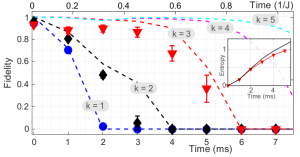
Efficient tomography of a quantum many-body system – B. P. Lanyon, C. Maier, M. Holzäpfel, T. Baumgratz, C. Hempel, P. Jurcevic, I. Dhand, A. S. Buyskikh, A. J. Daley, M. Cramer, M. B. Plenio, R. Blatt and C. F. Roos, Nature Physics 13, 1158 (2017) | ArXiv
Determining the quantum state of a many-body system represents a significant challenge because the dimension of the Hilbert space grows exponentially with the number of particles. In a joint project with the trapped ion group in Innsbruck, we report on the reconstruction of the quantum state of a 14-qubit experiment carried out in Innsbruck. The total effort to reconstruct the quantum state grows only polynomially with the number of particles thanks to a method proposed by our group and others in 2010. A mathematical theorem guarantees that the reconstructed state is nevertheless accurate. Our group contributed data analysis based on numerical methods and matrix product states. In addition, our group contributed an analytical analysis of the expected performance of our method when applied to time-evolved similar to the ones which occur in the experiment. This work represents the first experimental demonstration of our methods for the efficient reconstruction of quantum states.
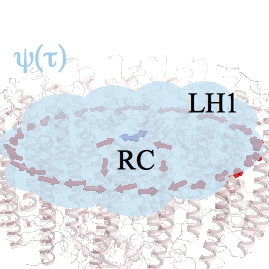
Quantum Redirection of Antenna Absorption to Photosynthetic Reaction Centers – F. Caycedo-Soler, C. A. Schroeder, C. Autenrieth, A. Pick, R. Ghosh, S. F. Huelga, and M. B. Plenio, J. Phys. Chem. Lett. 8, 6015 (2017) | ArXiv DOI:http://pubs.acs.org/doi/full/10.1021/acs.jpclett.7b02714
Photosynthesis — the conversion of sunlight to chemical energy — is fundamental for supporting life on our planet. The early steps of photosynthesis involve the photo-excitation of reaction centres (RCs) and light-harvesting (LH) units. In this article, to the best of our knowledge, we present the first quantum mechanical effect of excitonic energy transfer, happening at physiological conditions, by illumination with thermal light. The historically overlooked excitonic delocalisation across RC and LH pigments in various photosynthetic organisms is shown to display a significant redistribution of absorption amplitudes, which benefits the absorption cross section of the optical bands associated with the RC of several species. Using stochastic optimisation, we are able to delineate clear guidelines and develop simple analytic expressions, in order to amplify the coherent redirection in artificial nano-structures.
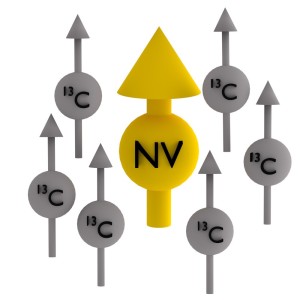
Robust techniques for polarization and detection of nuclear spin ensembles – J. Scheuer, I. Schwartz, S. Müller, Q. Chen, I. Dhand, M. B. Plenio, B. Naydenov, and F. Jelezko, Physical Review B, 96, 174436 (2017)
Highly sensitive nuclear spin detection is crucial in many scientific areas including nuclear magnetic resonance spectroscopy, magnetic resonance imaging (MRI), and quantum computing. The tiny thermal nuclear spin polarization represents a major obstacle towards this goal which may be overcome by dynamic nuclear spin polarization (DNP) methods. The latter often rely on the transfer of the thermally polarized electron spins to nearby nuclear spins, which is limited by the Boltzmann distribution. Here we utilize microwave dressed states to transfer the high (>92%) nonequilibrium electron spin polarization of a single nitrogen-vacancy center (NV) induced by short laser pulses to the surrounding C13 carbon nuclear spins. We introduce the polarization readout by polarization inversion method as a quantitative magnetization measure of the nuclear spin bath, which allows us to benchmark different DNP techniques and observe – by ensemble averaging – macroscopically hidden polarization dynamics like Landau-Zener-Stückelberg oscillations. Moreover, we show that using the integrated solid effect both for single- and double-quantum transitions nuclear spin polarization can be achieved even when the static magnetic field is not aligned along the NV’s crystal axis. This opens a path for the application of our DNP technique to spins in and outside of nanodiamonds.
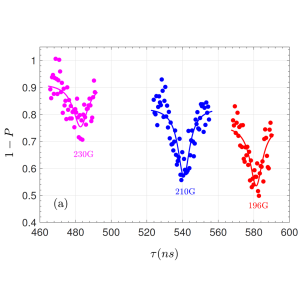
Unambiguous nuclear spin detection using an engineered quantum sensing sequence – Z. Shu, Z. Zhang, Q. Cao, P. Yang, M. B. Plenio, C. Müller, J. Lang, N. Tomek, B. Naydenov, L. P. McGuinness, F. Jelezko, and J. Cai, Physical Review A, 96, 051402(R) (2017), DOI:https://doi.org/10.1103/PhysRevA.96.051402
Sensing, localizing, and identifying individual nuclear spins or frequency components of a signal in the presence of a noisy environment requires the development of robust and selective methods of dynamical decoupling. An important challenge that remains to be addressed in this context are spurious higher-order resonances in current dynamical decoupling sequences [1] as they can lead to the misidentification of nuclei or of different frequency components of external signals. Here we overcome this challenge with engineered quantum sensing sequences that achieve both enhanced robustness and the simultaneous suppression of higher-order-harmonic resonances. We experimentally demonstrate the principle using a single nitrogen-vacancy center spin sensor which we apply to the unambiguous detection of external protons.
[1] M. Loretz, J. M. Boss, T. Rosskopf, H. J. Mamin, D. Rugar, and C. L. Degen, Phys. Rev. X 5, 021009 (2015).
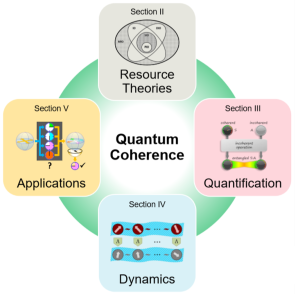
Colloquium: Quantum coherence as a resource – A. Streltsov, G. Adesso, and M. B. Plenio, Reviews of Modern Physics, 89, 041003 (2017) | ArXiv DOI:https://doi.org/10.1103/RevModPhys.89.041003
One of the central differences between classical and quantum physics is that individual quantum particles may exist in coherent superposition states while classically they cannot. This additional feature allows us to achieve physical effects that cannot be achieved in classical physics and therefore coherent superposition states represent a resource that we can make use of when our experimental capabilities are limited to classical devices. But how useful is a particular coherent superposition state, how costly is it to produce such states? This and many other natural questions can be posed and answered rigorously by formulating them as a mathematical theory of resources. This was proposed by our group at Ulm in 2014 and it has become a vibrant research area which the present work reviews.
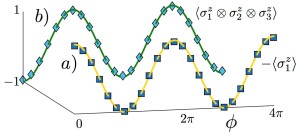
Arbitrary nuclear-spin gates in diamond mediated by a nitrogen-vacancy-center electron spin – J. Casanova, Z.-Y. Wang, and M. B. Plenio, Physical Review A, 96, 032314 (2017) | ArXiv, DOI:https://doi.org/10.1103/PhysRevA.96.032314
We present a method to achieve general N-body entangling quantum gates between nuclear spins in solid-state platforms based on nitrogen vacancy centers in diamond or divacancies in silicon carbide. Our protocol is general and robust, and paves the way to the implementation of fermionic interactions which find applications in, for example, quantum chemistry in solid-state quantum registers.
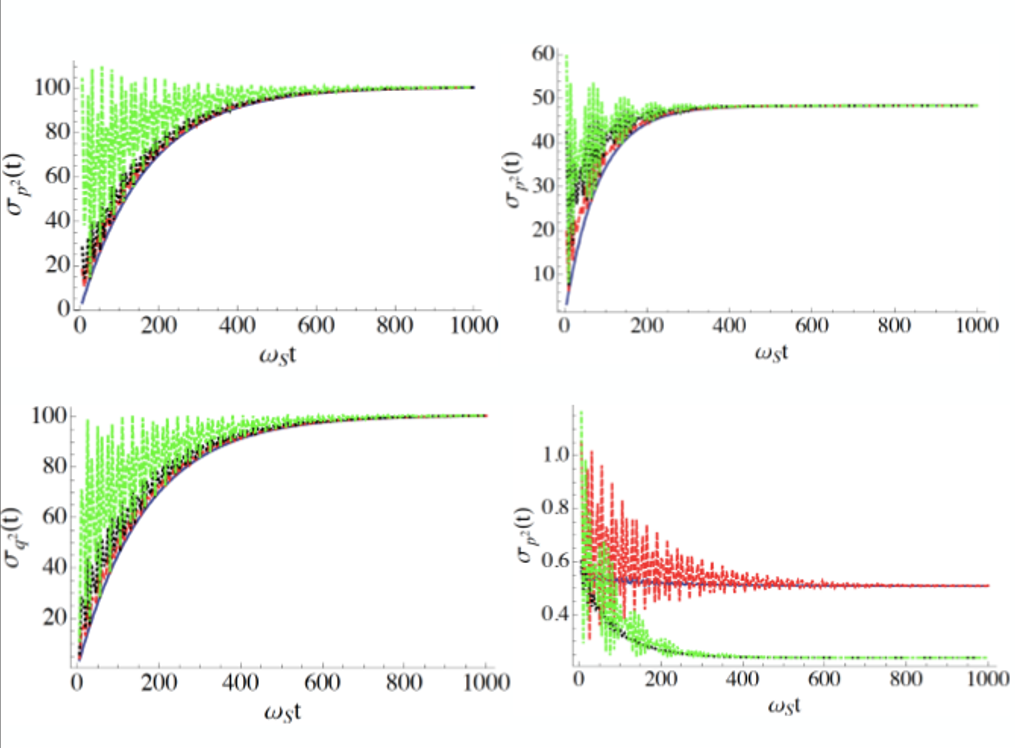
Momentum coupling in non-Markovian quantum Brownian motion – L. Ferialdi and A. Smirne, Physical Review A, 96, 012109 (2017) | ArXiv
DOI:https://doi.org/10.1103/PhysRevA.96.012109
Every quantum device unavoidably interacts with the surrounding environment. Generally, the resulting dynamics has to be described as non-Markovian, accounting for the memory effects due to the influence of the environment on the relevant system. Non-Markovian dynamics constitute a very large class of open-system evolutions and in order to investigate them it can be useful to focus on specific models. A fundamental one is provided by the so-called non-Markovian Brownian motion, where a system is bilinearly coupled via its position operator to a bath of harmonic oscillators. Such model is indeed at the same time physically meaningful and mathematically treatable in detail.
In this paper, we consider a generalization of the non-Markovian quantum Brownian motion, taking into account a coupling of the central harmonic oscillator both via its position and via its momentum operators with the bath. We derive the equations of motion for such a model, and we solve them for a generic Gaussian system state. We then investigate the resulting evolution of the first and second moments for different characterizations of the environment (spectral densities). In particular, we show that the coupling with the momentum enhances the dissipation experienced by the system, accelerating its relaxation to equilibrium, as well as modifying the asymptotic state of the dynamics. We also quantify the memory effects experienced by the system, thus characterizing the non-Markovianity of its evolution.
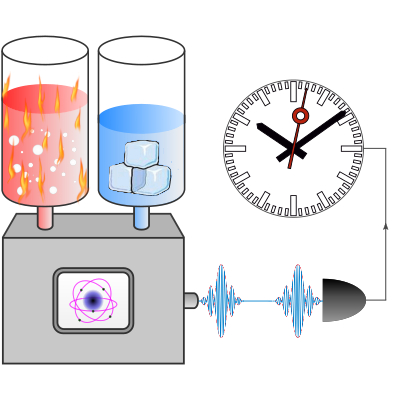
Autonomous Quantum Clocks: Does Thermodynamics Limit Our Ability to Measure Time? – P. Erker, M. T. Mitchison, R. Silva, M. P. Woods, N. Brunner, and M. Huber, Physical Review X,7, 031022 (2017) | ArXiv
DOI:https://doi.org/10.1103/PhysRevX.7.031022
See also the Physics viewpoint on the article.
Time is arguably one of the most prominent concepts in physics, yet it still holds a significant number of mysteries, particularly in the context of quantum physics. Quantum theory fails to provide a clear description of what time actually is and treats it simply as a classical external variable. It is often argued that this failure represents one of the obstacles to unifying quantum theory with general relativity. Here, we theoretically explore the ultimate limitations of measuring time based only on the laws of quantum physics. We introduce the concept of an autonomous quantum clock, which represents a minimal model of a quantum clock that is both complete and self-contained. It allows us to elucidate the fundamental limitations in the process of timekeeping without implicitly assuming unaccounted-for resources through external control. We assume that our out-of-thermal-equilibrium clock is powered by two thermal baths held at different temperatures. We show that the clock’s accuracy and resolution—its performance—are intimately related to the power the clock dissipates. In other words, measuring time results in an increase in entropy. This finding provides a quantitative basis for the intuitive connection between the second law of thermodynamics and the arrow of time.
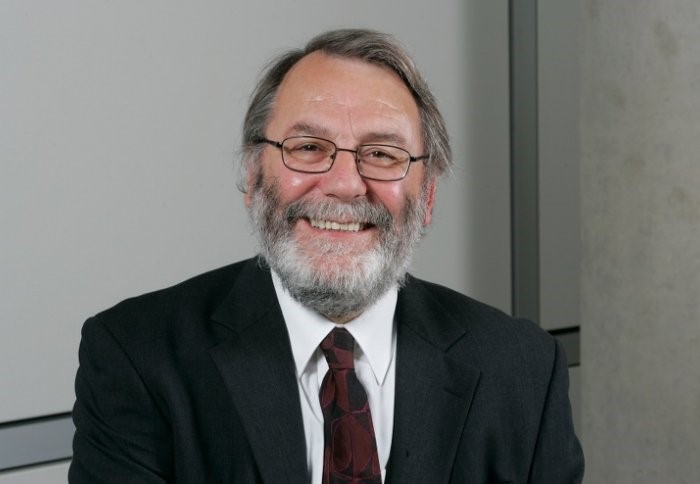
Journeys from quantum optics to quantum technology – S. M. Barnett, A. Beige, A. Ekert, B. M. Garraway, C. H. Keitel, V. Kendon, M. Lein, G. J. Milburn, H. M. Moya-Cessa, M. Murao, J. K. Pachos, G. M. Palma, E. Paspalakis, S. J. D. Phoenix, B. Piraux o , M. B. Plenio, B. C. Sanders, J. Twamley, A. Vidiella-Barranco, M. S. Kim, Progress in Quantum Electronics, 54, 19 (2017) | ArXiv
DOI:https://doi.org/10.1016/j.pquantelec.2017.07.002
In this work some of the large number of PhD students and postdocs of Professor Sir Peter Knight FRS present short reminiscences of scientific life and the time they have spent in the Theoretical Quantum Optics group at Imperial College that Peter had founded. This presents a glimpse on the vast impact that Peter has had on the development of quantum optics and quantum technologies throughout his career.
Photo: Ralph Hodgson/Imperial College London
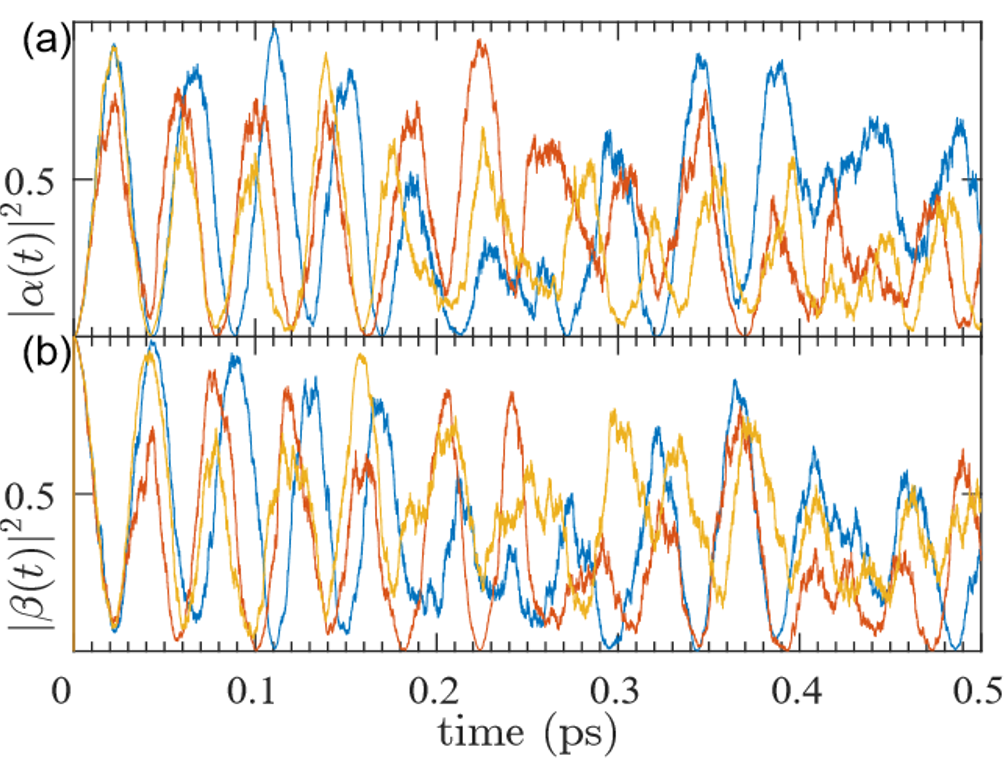
Stochastic unraveling of positive quantum dynamics – M. Caiaffa, A. Smirne, and A. Bassi, Physical Review A, 95, 062101 (2017)
The understanding of the dynamics of open quantum systems takes advantage of many different mathematical and conceptual tools, among which the stochastic unraveling is one of the most exploited. This method relies on a stochastic differential equation, which fixes trajectories in the set of the system’s pure states (the so-called quantum trajectories).
In this paper, we formulate a proper diffusive unraveling, which applies to positive, not necessarily completely positive dynamics. We prove in a constructive way how such an unraveling can be formulated for any positive semigroup dynamics, but also for a more general class of (divisible) open-system evolutions. In particular, the role of the rates and Lindblad operators in the standard unraveling is replaced by the eigenvalues and eigenvectors of a suitable rate operator. In this way, we provide a significant class of open-system dynamics with a useful tool to describe physical phenomena, which would be neglected within the usual, completely positive framework. The general approach is then applied to a prototypical model for the description of energy transfer in biomolecular networks.
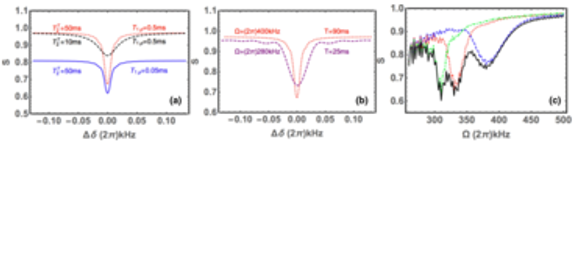
Dissipatively Stabilized Quantum Sensor Based on Indirect Nuclear-Nuclear Interactions – Q. Chen, I. Schwarz, and M. B. Plenio, Physical Review Letters, 119, 010801 (2017) | ArXiv
DOI:https://doi.org/10.1103/PhysRevLett.119.010801
The Nitrogen vacancy (NV) center is attracting increasing attention due to two major applications: quantum register and sensing. However, there are several outstanding challenges caused by the relaxation and decoherence processes of the NV center electron spin as these limit quantum gate fidelities on nuclear registers as well as spectral resolution, selectivity and signal to noise ratio in sensing applications. Here, we address directly the challenges by using the NV center as a mediator to couple two nuclear spins, while eliminating the NV center and the effect of its decoherence and relaxation from the dynamics. The key idea is the use of the substantial second order coupling between the nuclear spins obtained through a strongly detuned NV centre which is periodically reinitialized by a dissipative process. Thus, high fidelity of selective quantum gates between the nuclear spins, as well as an improved sensing setup, are made possible even at ambient condition.
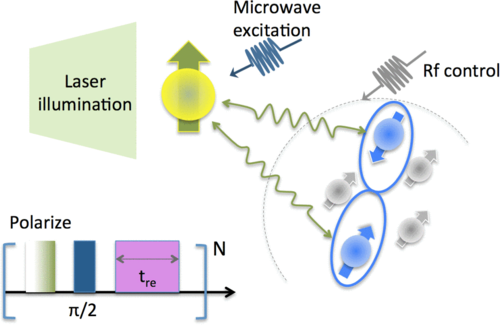
Steady-state preparation of long-lived nuclear spin singlet pairs at room temperature – Q. Chen, I. Schwarz, and M. B. Plenio, Physical Review B, 95, 224105 (2017) | ArXiv
DOI:https://doi.org/10.1103/PhysRevB.95.224105
The preparation of nuclear spins in singlet states is attracting increasing attention due to their weak coupling to several environmental relaxation processes especially for closely spaced nuclei when their interaction with their environment is symmetric to a very good approximation and transitions between the singlet and triplet states are suppressed. However, the generation of a singlet state of nuclear spins in experiments by using unitary preparation is extremely difficult at room temperature. Here, we propose a dissipative scheme that achieves the preparation of pairs of nuclear spins in long-lived singlet states by a protocol that combines the interaction between the nuclei and a periodically reset electron spin of a nirogen-vacancy center with local radio-frequency control of the nuclear spins. The final state of this protocol is independent of the initial preparation of the nuclei, is robust to external field fluctuations, and can be operated at room temperature.
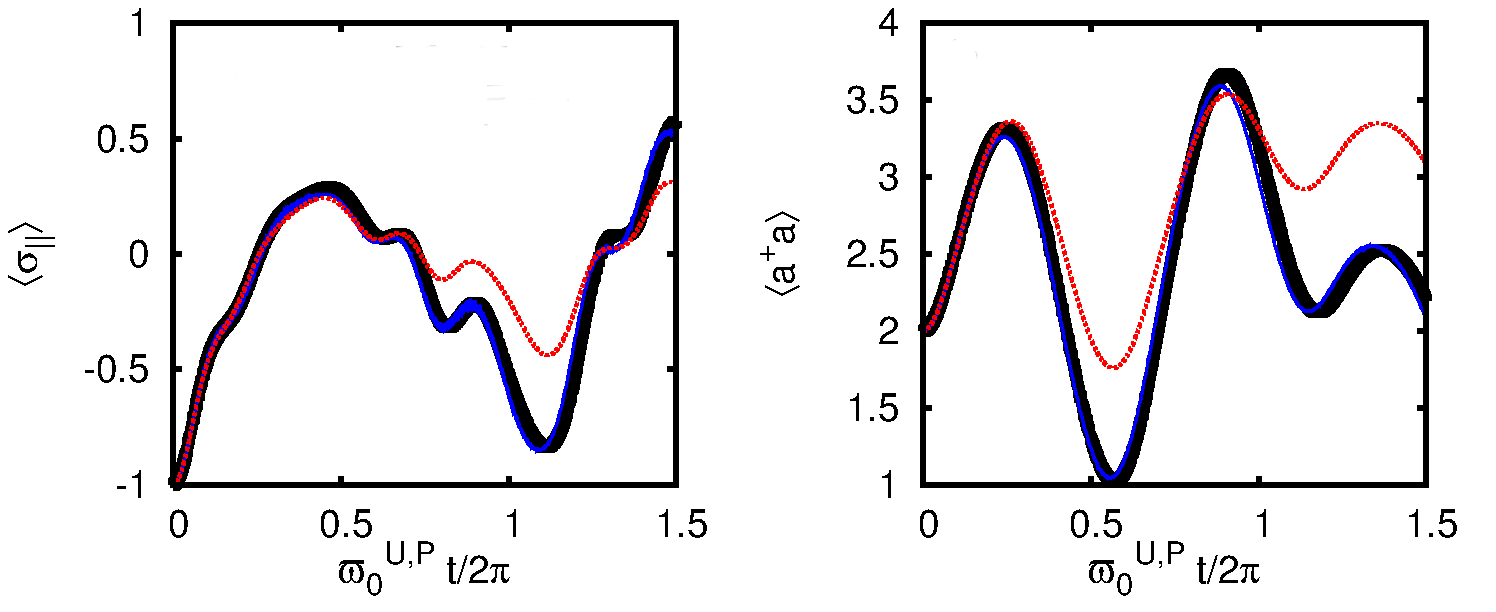
Protected ultrastrong coupling regime of the two-photon quantum Rabi model with trapped ions – R. Puebla, M.-J. Hwang, J. Casanova, and M. B. Plenio,
Physical Review A, 95, 063844 (2017) | ArXiv
DOI: https://doi.org/10.1103/PhysRevA.95.063844
The achievement of almost perfectly isolated quantum systems is nowadays possible thanks to the development of modern quantum technologies. However, imperfections or noises are inherent to any experimental platform. These imperfections, which stem from an uncontrolled interaction with the environment, lead to the loss of coherence and spoil a correct realization of a desired quantum isolated system. In this regard, there are a several schemes whose ultimate goal consists in shielding the quantum system from these imperfections, and in this manner quantum coherence can be preserved during longer times. This is of particular relevance when, in order to accomplish the quantum dynamics of a system, a long time is required, comparable or longer than the decoherence time.
In this work we propose a scheme based on a continuous dynamical decoupling scheme that allows us to realize a two-photon quantum Rabi model with a trapped ion, while at the same time, it largely reduces the impact of the magnetic dephasing noise. Indeed, this noise has been acknowledged as the main obstacle to achieve long-time coherent dynamics in ion-trap simulators. Since the realization of the two-photon quantum Rabi model involves second-order sideband processes, the resulting dynamics becomes unavoidably slow in the ultrastrong coupling regime, and thus more exposed to noise. Here we show the suitability of the proposed scheme and discuss how dynamical decoupling methods take a dual role: they suppress the main source of decoherence, while they define the parameter regime of the simulated model.
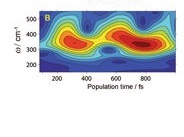
Quantum – coherent dynamics in photosynthetic charge separation revealed by wavelet analysis – E. Romero, J. Prior, A. W. Chin, S. E. Morgan, V. I. Novoderezhkin, M. B. Plenio, and R. van Grondelle,
Nature Scientific Reports, 7, 2890 (2017) | ArXiv
This work is licensed under a Creative Commons Attribution 4.0 International License.
Photosynthetic complexes need to absorb photons, transport the resulting excitons to the reaction center where they are then split into separated charges which, further down the line, drive the metabolism of the plants. All this happens under ambient conditions in complexes that are vibrating. In 2010 our group has proposed that the coupling between electronic and vibrational degrees of freedom plays an important role to facilitate some of these processes. Recent experiment using 2D-electronic spectroscopy have shown first evidence of this dynamics but he data were analysed in frequency space which tells you about resonances and coupling rates in the system but not about their temporal evolution. In order to get a better understanding, a paper from our group in 2013 proposed a wavelet analysis which allows us to observe time and frequency resolved information at the same time and hence make the dynamics of the photosynthetic complex visible. In the present work these tools have been put into action to analyse recent experimental results in the PSII reaction center and to provide further support of our hypothesis that vibronic effect support charge separation.
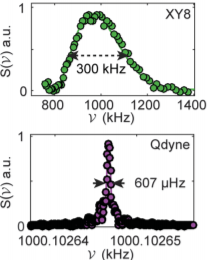
Submillihertz magnetic spectroscopy performed with a nanoscale quantum sensor – S. Schmitt, T. Gefen, F. M. Stürner, T. Unden, G. Wolff, C. Müller, J. Scheuer, B. Naydenov, M. Markham, S. Pezzagna, J. Meijer, I. Schwarz, M.B. Plenio, A. Retzker, L. P. McGuinness, and F. Jelezko,
Science, 356, 832 (2017)
Reprinted with permission from AAAS
DOI: 10.1126/science.aam5532
Precise timekeeping is critical to metrology, forming the basis by which standards of time, length and fundamental constants are determined. Stable clocks are particularly valuable in spectroscopy (e.g. nuclear magnetic resonance spectroscopy) as they define the ultimate frequency precision that can be reached. In quantum metrology, where the phase of a qubit is used to detect external fields, the clock stability is defined by the qubit coherence time, which determines the spectral linewidth and frequency precision. Here we demonstrate a quantum sensing protocol where the spectral precision goes beyond the sensor coherence time and is limited by the stability of a classical clock. Using this technique, we observe a precision in frequency estimation scaling in time T, as T^(-3/2) for classical oscillating fields instead of the typical T^(-1/2). The narrow linewidth magnetometer based on single spins in diamond is used to sense nanoscale magnetic fields with an intrinsic frequency resolution of 607µHz, 8 orders of magnitude narrower than the qubit coherence time.
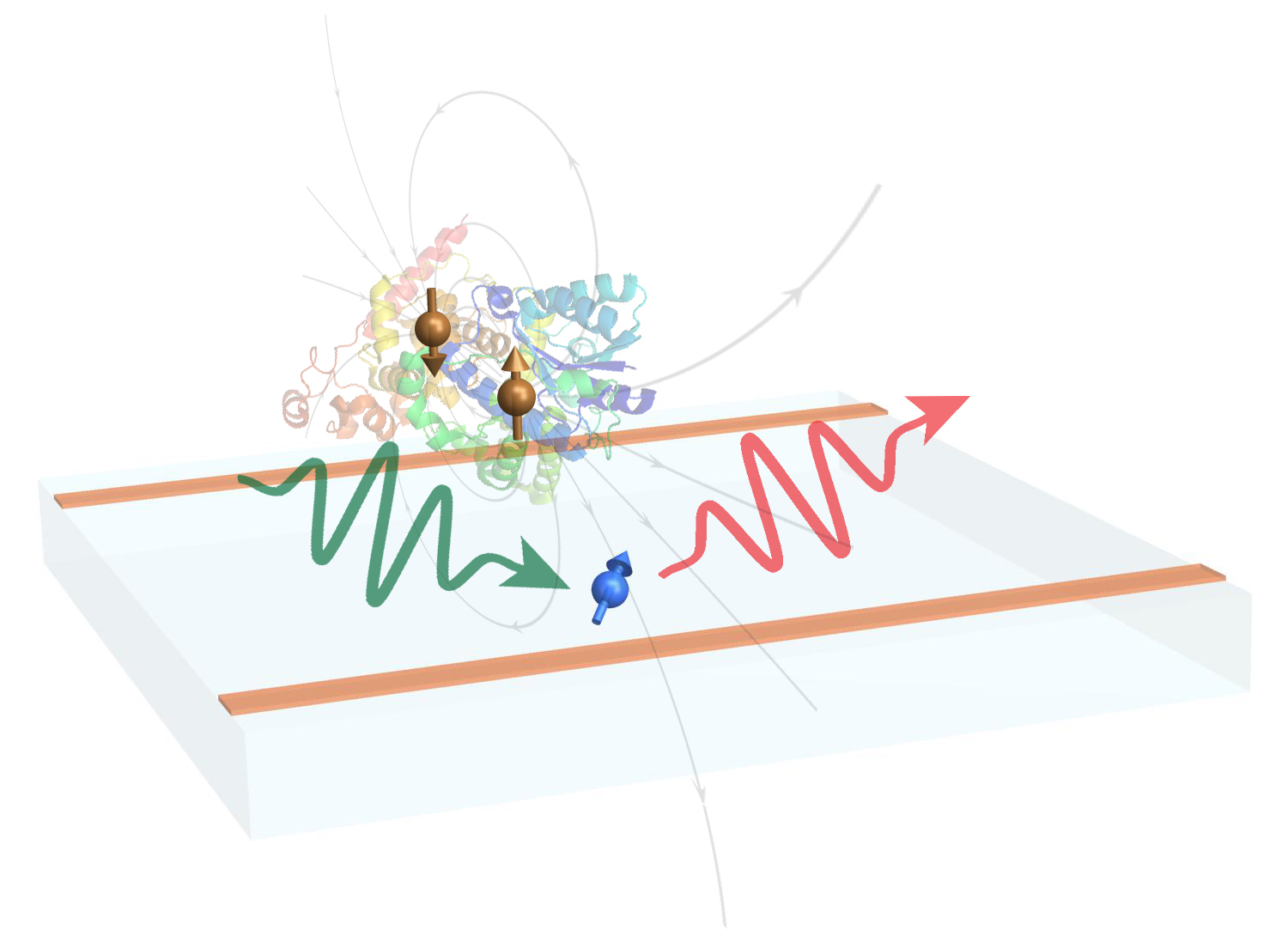
Scheme for Detection of Single-Molecule Radical Pair Reaction Using Spin in Diamond – H. Liu, M. B. Plenio, and J. Cai, Physical Review Letters, 118, 200402 (2017) | ArXiv
DOI:https://doi.org/10.1103/PhysRevLett.118.200402
It is well established that some birds, such as European Robbins, have a magnetic sense which supports their orientation during migration. What is not known however is the origin of this magnetic sense. There are two main theoretical models, one based on small magnetite particles that may reorient in an external magnetic field and the other based on the idea that upon photo excitation a certain type of molecules in the eye of a bird support a radical pair formed by two electrons which evolve under the joint action of the Zeeman interaction with the external magnetic field and the hyperfine interaction with the supporting molecule. Both are plausible and experiment needs to decide which is true. This is a very challenging task and in this work we propose the use of colour centers in diamond to try and observe the dynamics of the radical pair. The new twist here is that we are looking for the electric field rather than the magnetic field emanating from the radical pair. We show that in principle this should enable to observe some properties of the radical pair reaction such as the recombination rate.
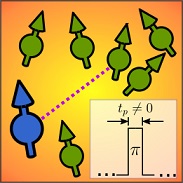
Enhanced Resolution in Nanoscale NMR via Quantum Sensing with Pulses of Finite Duration– J. E. Lang, J. Casanova, Z.-Y. Wang, M. B. Plenio, and T. S. Monteiro, Physical Review Applied, 7, 054009 (2017)
DOI:https://doi.org/10.1103/PhysRevApplied.7.054009
Nanoscale NMR and MRI employ microwave pulses to decouple the quantum sensor from sources of decoherence and to enhance the weak signals of single nuclear spins. In our work we show that the finite width of these pulses, typically thought of as an error source, can be exploited as a resource for increasing spectral resolution.
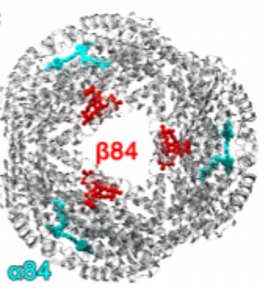
Regulating the Energy Flow in a Cyanobacterial Light-Harvesting Antenna Complex – I. Eisenberg, F. Caycedo-Soler, D. Harris, S. Yochelis, S.F. Huelga, M.B. Plenio, N. Adir, N. Keren, and Y. Paltiel, J. Phys. Chem. B, 121, 1240-1247 (2017)
DOI: 10.1021/acs.jpcb.6b10590
Copyright {2017} American Chemical Society
Photosynthetic organisms are able to thrive in environments in which the light intensities are constantly changing, from extremely bright to weak or diffuse. This is made possible by the existence of molecular mechanisms that can switch between extremely efficient excitation energy transfer in low light conditions to drive light−chemical energy conversion and on the other hand means to quench energy in bright conditions. Here, we show that the cyanobacterial light-harvesting antenna complex may be able to regulate the flow of energy to switch reversibly from efficient energy conversion to photo-protective quenching via a structural change. Our experimental collaborators were able to isolate specific light-harvesting proteins and to measure their optical properties both in solution and in a desiccated state. The result indicate, supported by theoretical modeling, that the energy band structures are changed, generating a switch between the two modes of operation, exciton transfer and quenching. This flexibility can contribute greatly to the large dynamic range of cyanobacterial light-harvesting systems.
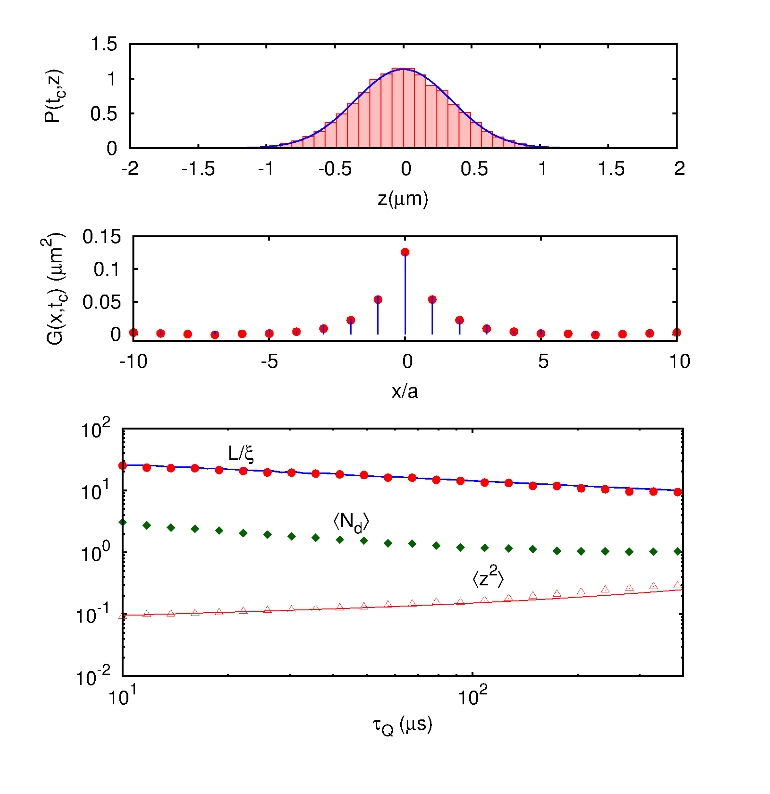
Fokker-Planck formalism approach to Kibble-Zurek scaling laws and nonequilibrium dynamics– R. Puebla, R. Nigmatullin, T. E. Mehlstäubler, and M. B. Plenio, Physical Review B, 95, 134104 (2017) |ArXiv
DOI:doi.org/10.1103/PhysRevB.95.134104
A system undergoing a symmetry-breaking second-order phase transition is characterized by the emergence of singular behavior in distinct quantities at a critical value of an external parameter. However, while equilibrium or static properties of these phase transitions are well understood, features of the dynamics when traversing a phase transition at a finite rate are less clear and are object of current research. This includes the study of defect formation, how equilibrium singularities leave their imprint on the resulting nonequilibrium dynamics or how such dynamics are affected by finite size systems, among other aspects. In this context, the celebrated Kibble-Zurek mechanism merits special mention as it successfully predicts the scaling behavior of the formed defects as a function of the rate at which the second-order phase transition is traversed.
In this work we explore the aforementioned scenario in two different models, namely, a one-dimensional Ginzburg-Landau model and a linear to zigzag phase transition in an ion Coulomb crystal. We analyze the nonequilibrium dynamics resulting when traversing at finite rate the second-order phase transition by means of a Fokker-Planck formalism. This formalism allows us to obtain the probabilistic state of the system in a deterministic manner, and therefore, it aims to solve the nonequilibrium dynamics problem at the ensemble rather than at the individual realization level, as is the case in the Langevin approach. Furthermore, we show that the nonequilibrium results are well reproduced when nonlinear terms in both models are neglected, as for example the Kibble-Zurek scaling laws that dictate the dependence of spatial correlations on the quench rate. The developed framework is computationally efficient and enables the prediction of finite-size scaling functions. Additionally, it might be useful to investigate scaling laws of other important quantities in stochastic thermodynamics such as entropy production and work done.
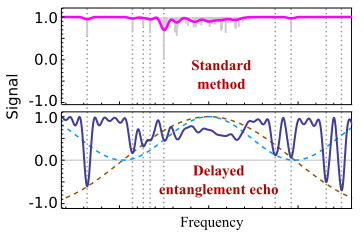
Delayed entanglement echo for individual control of a large number of nuclear spins – Z.-Y. Wang, J. Casanova and M. B. Plenio, Nature Communications,8, 14660 (2017) | ArXiv
This work is licensed under a Creative Commons Attribution 4.0 International License.
Quantum technologies require reliable quantum control on individual elements of microscopic quantum systems. But for potential massive quantum resources such as hundreds of long-lived nuclear spins near the electron of single nitrogen-vacancy (NV) centers in diamond, individual detection and manipulation are challenging. In this work, we solve the difficulties and problems ahead by using a delayed entanglement operation. With our protocol one can detect, address and control nuclear spins around an electron spin unambiguously and individually in a broad frequency band. Hybrid quantum systems can be naturally incorporated to our scheme for improved performance. Our work would allow large-scale quantum information processing and quantum simulation on nuclear spin qubits, as well as atomic-scale imaging for biomolecules. There are also applications of our method in traditional fields of nuclear magnetic resonance (NMR) and electron-nuclear double resonance (ENDOR), for example, in analysis of chemical shifts and materials.

Open Systems with Error Bounds: Spin-Boson Model with Spectral Density Variations – F. Mascherpa, A. Smirne, S. F. Huelga and M. B. Plenio,
Physical Review Letters, 118, 100401 (2017) |ArXiv
DOI: https://doi.org/10.1103/PhysRevLett.118.100401
Open quantum systems in harmonic environments are often modeled theoretically and simulated numerically in terms of the spectral density of the bath, which details how strongly the central system couples to each of the environmental modes as a function of the mode frequency. The spectral density is not usually known exactly; in this paper, we investigate the sensitivity of operator expectation values to variations and errors in it, and derive upper bounds on the error affecting the predictions as a function of the spectral deviation considered.

Quantum Machine Learning over Infinite Dimensions – H.-K. Lau, R. Pooser, G. Siopsis and C. Weedbrook
Machine learning is a data-manipulation techniques that has been increasingly important in e.g. finance and national security. Recently, it is discovered that quantum computer can reduce the resource requirement of machine learning. Nevertheless, current quantum machine learning algorithms store information as qubits, which can be implemented on only discrete-variable type of quantum systems. In this work, we generalize quantum machine learning algorithm to continuous-variable type of quantum system, which could be found in various physical platforms and could store more information in each degree of freedom. Specifically, we developed a continuous-variable version of exponential-swap operation. We showed how exponential-swap can be applied to various machine learning tasks, which include Matrix inversion, Principal component analysis, and Vector distance computation. We also discussed potential optical implementation of the operations.
This work has recently attracted some public attention. For a popular science report, please visit https://phys.org/news/2017-03-physicists-quantum-machine-infinite-dimensions.html
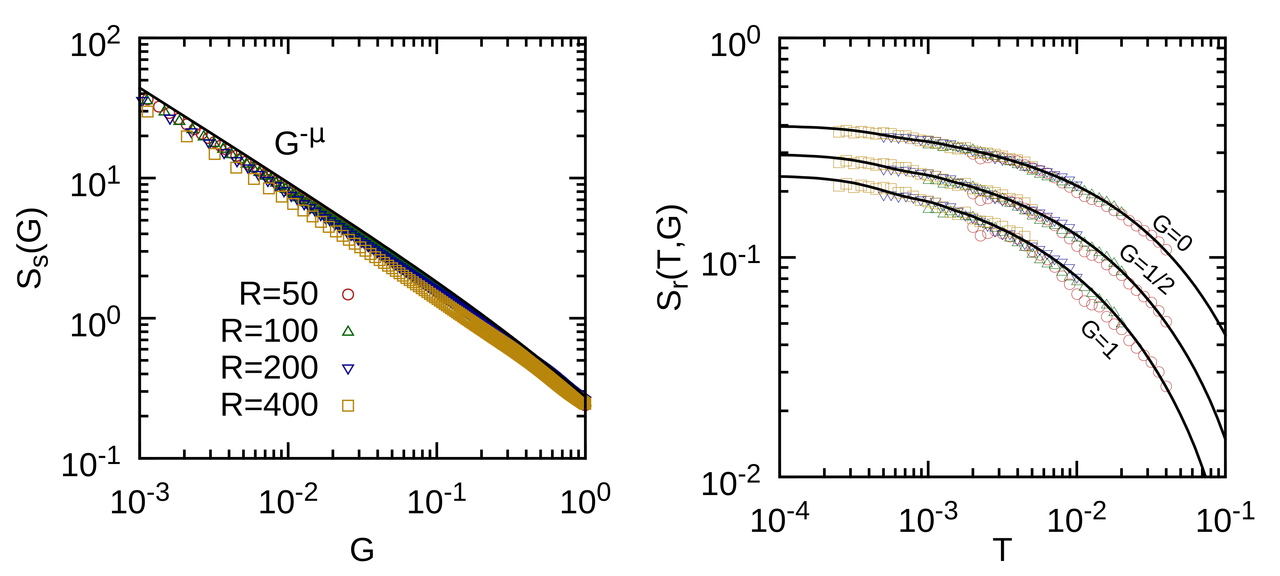
Probing the Dynamics of a Superradiant Quantum Phase Transition with a Single Trapped Ion – R. Puebla, M.-J. Hwang, J. Casanova and M. B. Plenio,
Physical Review Letters, 118, 073001 (2017) | ArXiv
DOI:doi.org/10.1103/PhysRevLett.118.073001
Phase transitions typically take place in the limit of infinitely many particles, the so-called thermodynamic limit. A recent theoretical finding has shown, however, that a quantum phase transition can occur even in finite-component systems of coupled bosons and spins in the limit of extremely large coupling strength and large detuning (see Phys. Rev. Lett. 115, 180404 (2015)). In this work, we demonstrate for the first time that such an extreme parameter regime can be indeed achieved using a single trapped ion with currently available technology and that it is possible to probe the universal properties of the nonequilibrium dynamics of the phase transition. Our work demonstrates that the trapped ion system can serve as an ideal platform to explore the physics of a phase transition both in and out of equilibrium without the daunting task of scaling up the number of ions.
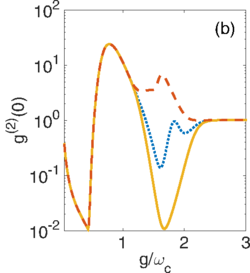
Metastability in the driven-dissipative Rabi model– A. Le Boité, M.-J. Hwang and M. B. Plenio,
Physical Review A, 95, 023829 (2017) | ArXiv
DOI:doi.org/10.1103/PhysRevA.95.023829
Experiments in cavity quantum electrodynamics (cavity QED), involving a strong interaction between an atom and a cavity photonic mode, have proved to be very powerful for testing our understanding of the quantum world. In this context, a common way to probe the quantum nature of the interaction between light and matter is to drive the system with a classical light field (such as a laser), and record the statistics of the photons emitted from the cavity. The number of photons in a coherent light field like a laser follows a Poissonian distribution. A sub-Poissonian statistics, which shows less fluctuations in the number of photons, is however a genuine quantum effect and an important evidence of effective photon-photon interactions induced by the atom-cavity coupling.
From a theoretical point of view, the interaction between a two-level atom and a single cavity mode is well captured by the quantum Rabi model. A driven-dissipative version of this model, including the external driving field and the inevitable leakage of photons out of the cavity, is thus well suited to describe the cavity QED experiments mentioned above. Until now, most of the studies have focused on the steady-state of the system, reached when the external driving exactly compensate the different losses mechanisms. In this paper, we go beyond the study of steady-state properties and explore the transient dynamics of the driven-dissipative Rabi model.
In particular, we show that, as the atom-cavity coupling strength becomes larger than the cavity frequency, a new time scale emerges. This time scale, much larger than the natural relaxation time of the atom and the cavity, leads to long-lived metastable states susceptible to being observed experimentally. By systematically investigating the set of possible metastable states, we find that their properties can differ drastically from those of the steady state and relate these properties to the energy spectrum of the Rabi Hamiltonian.
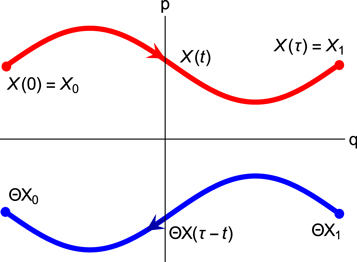
Relations between dissipated work in non-equilibrium process and the family of Rényi divergences – B.-B. Wei and M. B. Plenio,
New Journal of Physics, 19, 0023002 (2017) | ArXiv
While the statistical mechanics of thermodynamical system in equilibrium is well understood and taught at undergraduate level, a similar theory for systems that are far off equilibrium has not been established yet. What is, for example, the work done when a system is pushed far away from equilibrium? Even such a seemingly, simple question that has a straightforward answer in equilibrium statistical mechanics is difficult to assess far away from equilibrium. This is a question that we consider in our work. More specifically, we link the dissipated work done on a system driven arbitrarily far from equilibrium to a concept from quantum information science, namely the family of Rényi divergences between initial and final state along the forward and reversed dynamics.
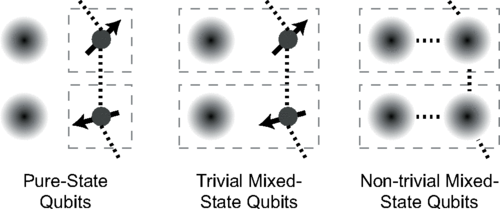
Universal continuous-variable quantum computation without cooling – H.-K. Lau and M. B. Plenio, Physical Review A, 95, 022303 (2017) | ArXiv
DOI:doi.org/10.1103/PhysRevA.95.022303
When we do quantum computation, the computer is usually initiated in a known state, i.e., pure state. If the quantum computer is composed of harmonic oscillators, i.e., continuous-variable quantum computer, it is usually initialised by ground-state cooling, which is unfortunately not an easy process for many quantum systems. In this work, we show that, surprisingly, quantum computation is possible even if we do not completely know the quantum state, i.e., mixed state, so ground-state cooling is not necessary. We explicitly propose a two-qumode parity encoding that each qubit is represented by two mixed-state harmonic oscillators, and outline how the quantum logic gates can be implemented. We show that in some situation, our scheme allows quantum computation at which ground-state cooling is challenging. Our scheme can also tolerate a wider range of error, and reduce the fundamental initialisation energy, than any pure-state scheme.
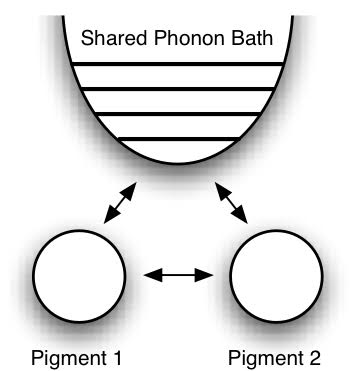
Signatures of spatially correlated noise and non-secular effects in two-dimensional electronic spectroscopy – J. Lim, D. J. Ing, J. Rosskopf, J. Jeske, J. H. Cole, S. F. Huelga and M. B. Plenio,
J. Chem. Phys. 146, 024109 (2017)|ArXiv
Several competing theoretical models have been proposed to explain long-lived quantum coherences in photosynthetic complexes observed by using two-dimensional (2D) electronic spectroscopy. These models consider different vibrational structures, such as correlated fluctuations in dephasing noise and disorder induced by delocalised phonon modes coupled to several pigments, and vibronic features in phonon spectral densities induced by underdamped vibrational modes. Vibronic models have been tested both experimentally and theoretically for many biological and artificial systems, as shown in Nature Comm. 6, 7755 (2015) by our group. However, correlated fluctuation models have received little attention in the context of 2DES simulations, even though recent 2D experiments suggested the presence of correlated fluctuations in some biological and engineered molecular systems. In this work, we theoretically investigate how correlations in the noise affect 2D optical responses with the aim to identify the signatures of correlated fluctuations in 2D electronic spectra.
Contact



Ulm University
Institute of Theoretical Physics
Albert-Einstein-Allee 11
D - 89081 Ulm
Germany
Tel: +49 731 50 22911
Fax: +49 731 50 22924
Office: Building M26, room 4117
Click here if you are interested in joining the group.
Most Recent Papers
Making quantum collision models exact, Commun. Phys. 8, 268 (2025), arXiv:2411.13166
Accelerating two-dimensional electronic spectroscopy simulations with a probe qubit protocol, Phys. Rev. Research 7, 023130 (2025), arXiv:2411.16290
13C hyperpolarization with nitrogen-vacancy centers in micro- and nanodiamonds for sensitive magnetic resonance applications, Sci. Adv. 11, eadq6836 (2025), arXiv:2403.14521
YASTN: Yet another symmetric tensor networks; A Python library for Abelian symmetric tensor network calculations, SciPost Phys. Codebases (2025), arXiv:2405.12196
Unlocking Heisenberg Sensitivity with Sequential Weak Measurement Preparation, Quantum 9, 1590 (2025), arXiv:2403.05954
